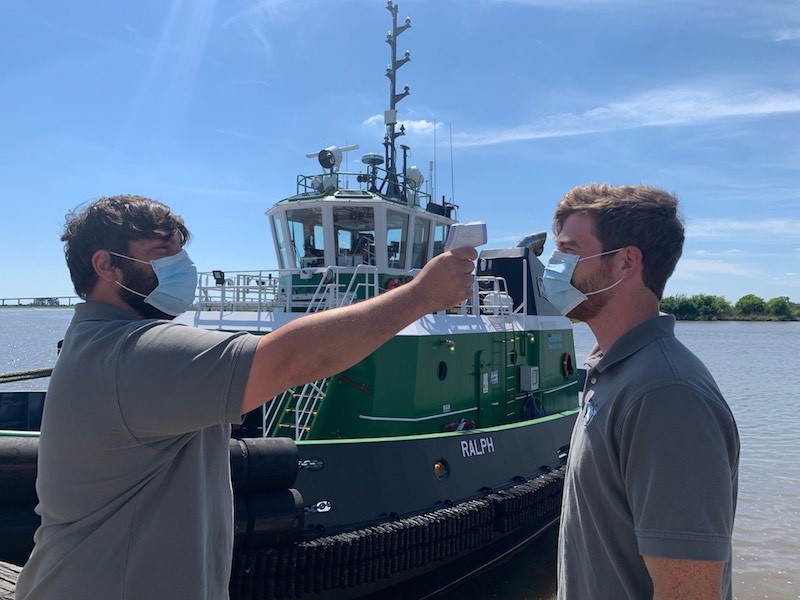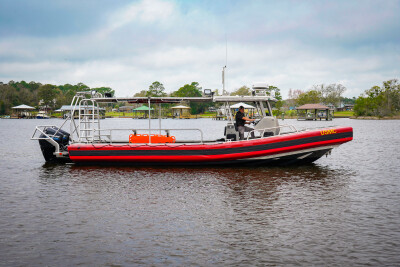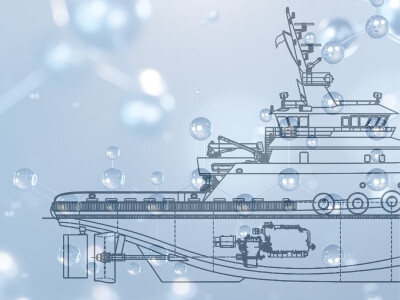Maritime transportation workers are getting a taste of what it means to be an essential worker, working without interruption during the pandemic. But they haven’t been deemed essential enough to receive Covid-19 vaccinations even though they work in confined spaces, close to many other people and handle products important to the national economy.
But as vaccines are becoming more readily available and states are ramping up their vaccination programs, this is starting to change.
As of March 22, essential critical infrastructure workers, including maritime transportation workers, became eligible in Alabama, Arkansas, Delaware, Hawaii, Kentucky, Louisiana, Missouri, Tennessee and Virginia, according to a list compiled by American Waterways Operators (AWO).
In other states, these essential workers will be eligible on April 13 in Maryland, March 29 in New Jersey, and April 19 in Oregon. The state of Washington is vaccinating those who work in enclosed spaces, around others and can’t maintain physical distance, including some vessel crewmembers.
The following maritime-related states have opened vaccinations to anyone over age 16: Alaska, Mississippi and West Virginia, while Georgia will come on board March 25, Texas on March 29, Indiana on March 31, Tennessee, Connecticut and Michigan on April 5, and Maine, Massachusetts and Rhode Island on April 19.
For months, the maritime industry has been lobbying state and federal governments and various health agencies to secure priority Covid-19 vaccinations for U.S. mariners. But the effort has met with only partial success, as decisions are fragmented, with guidance coming from the federal government, but final decisions on priority vaccination groupings being made by state health officials and governors, or local county officials.
Some states, for example, prioritize grocery workers but others do not. Others give the elderly the jab first, while others do not. Same for teachers. In just about every state, mariners, often lumped together with other infrastructure workers, are excluded from priority groupings.
“What we’re seeing is a patchwork approach when given high level guidance and decisions are made at the local and state levels,” said Caitlin Stewart, director of regulatory affairs at AWO.
She said states have different drivers for setting their priority groups, such as protecting vulnerable people in nursing homes or immunizing teachers so that schools can reopen. “Our argument is that maritime transportation workers are critical to the national supply chain and the ability of other frontline workers to do their jobs. You can’t fill grocery shelves without products to put there.”
AWO and other organizations have appealed to federal health agencies like the Centers for Disease Control and Prevention to get mariners priority status, while also reaching out to some two dozen individual states where mariners work.
“The response was varied,” Stewart said. “Some invited the conversation, while others had more of a closed process on vaccination allocation. We’ve seen some breakthroughs but it has been a patchwork as states approach (vaccine allocation) differently.”
Mariners include those working in the inland river system, coastal waters and harbors, ocean-going vessels and ports (longshoremen). While infections in the inland industry have been relatively low and related to exposure mostly off vessels, the situation is far more serious in the nation’s ports, where some 1,000 West Coast longshore workers have been infected with Covid-19 and over a dozen have died. Many more have been off the job because of the pandemic, causing port congestion and delays, according to the Maritime Labor Alliance.
For many in the maritime industry, the vaccination process has been far too slow in reaching them. The industry has contacted Congress, the White House, the Centers for Disease Control and state governments through letters, calls and appearances at congressional hearings. Labor unions have offered educational and logistical support, including use of union facilities as vaccination sites.
Nonetheless, maritime workers have not been given higher priority or categorized as frontline essential workers in the guidelines the CDC has given states, even though the Department of Homeland Security’s Cybersecurity and Infrastructure Security Agency and the Coast Guard consider mariners essential workers.
“This suggests that a national strategy for mariner vaccination, or at minimum, clear federal guidance for states, is urgently needed to efficiently immunize these essential workers and ensure the safety and continuity of waterborne transportation,” Del Wilkins, president of Illinois Marine Towing Inc., Joliet, Ill., told a House subcommittee hearing in February. “We’re not asking to cut the line. We’re asking to work with you and the administration to ensure the timely and efficient immunization of a relatively small segment of the country’s frontline essential workforce that has an outsize impact on our economy and security.”





